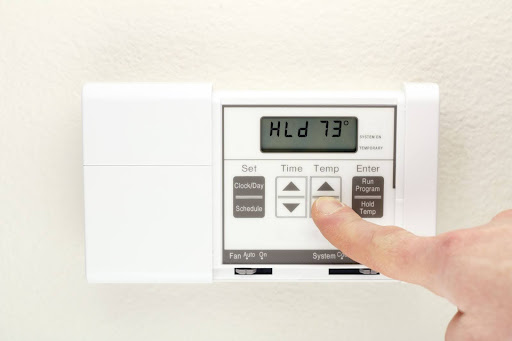When you’re shopping for a new air conditioner or heat pump, you’re bound to come across the term “SEER rating.” But what does it actually mean — and why should you care? At Apollo Heating, Cooling, and Plumbing, we believe our customers deserve to make informed decisions.
Let’s break down the SEER rating meaning, why it matters, and how it ties into your budget, energy consumption, and overall comfort.
What Is a SEER Rating?
SEER stands for Seasonal Energy Efficiency Ratio. It’s a standardized measurement that gauges the efficiency of an air conditioning or heat pump system over an entire cooling season. Essentially, it tells you how much cooling capacity you get for each unit of electrical energy consumed — typically measured in watts.
Think of it like gas mileage for your car: the higher the number, the more energy-efficient your system is. The highest SEER rating you can find today for residential systems goes well above 20, and high SEER AC units are engineered for maximum energy conservation and performance.
Why SEER Ratings Matter for Homeowners in Akron & Northeast Ohio
Understanding your system’s SEER rating helps you evaluate how much you’ll spend on electricity during peak temperature months. A high SEER system not only delivers better comfort but also helps reduce your carbon footprint by cutting greenhouse gas emissions.
Here’s why the SEER rating matters to you:
- Lower Utility Bills: High-SEER systems use less electricity, which can significantly reduce your monthly cost — a big win for your budget.
- Better Performance: These systems manage humidity, maintain consistent temperature, and reduce static pressure within your duct system.
- Environmental Benefits: More efficient systems mean reduced greenhouse gas output and fuel consumption, whether you use natural gas, electric heating, or hybrid systems.
- Incentives and Credits: Many high-efficiency heat pumps, mini-splits, and other unit types qualify for tax credits, rebates, or other incentives — especially those marked with the ENERGY STAR label.
A high SEER AC system is an investment that pays off through reduced energy consumption and fewer service calls. Plus, it may even boost your home’s value as a home improvement upgrade.
How SEER Ratings Compare With Other Efficiency Metrics
While SEER focuses on cooling, there are additional metrics you’ll want to understand:
- HSPF (Heating Seasonal Performance Factor): Measures how efficiently a heat pump heats your home.
- COP (Coefficient of Performance): Compares the amount of heat provided to the amount of electrical energy consumed.
- SEER2 Rating: A newer standard that adjusts for real-world conditions, including static pressure in ductwork, making it a more accurate representation of efficiency.
Comparing these metrics helps you decide whether a ground-source heat pump, air-source heat pump, or traditional furnace is right for your climate, home, and utility needs.
What Affects Your SEER Rating’s Performance in Akron & Northeast Ohio?
A system’s SEER rating isn’t the only thing that affects energy use. A few key factors play a role in real-world performance:
- Installation Quality: Poorly installed systems won’t perform to their SEER rating. Our HVAC pros make sure your system is calibrated for optimal airflow, pressure, and duct configuration.
- Maintenance: Regular maintenance helps keep your system running at peak efficiency. Dirty air handlers, blocked filters, or low refrigerant can decrease performance.
- Thermostat Control: Upgrading to a smart thermostat helps maintain consistent indoor conditions while optimizing energy use.
- Weather and Climate: Your local weather and humidity levels affect how often your system runs. Systems in the United States vary widely in performance depending on region.
- Home Efficiency: Well-sealed windows, proper insulation, and energy-smart plumbing can complement a high-SEER system and reduce electricity consumption.
The more efficient your entire system is — from air conditioner to ductwork, thermostat to insulation — the more you’ll save and the better your indoor air quality will be.
Is a High SEER System Worth the Price?
While high-SEER systems may come with a higher price tag, they often result in substantial savings over time. Between lower utility bills, fewer breakdowns, and potential tax incentives, many homeowners see them as a smart long-term investment.
Plus, with increasing regulations aimed at sustainability, more consumers are turning to renewable energy options, such as solar energy, in tandem with efficient HVAC systems. Whether you’re looking to minimize your carbon footprint, reduce consumption, or simply stay cool without breaking the bank, a high-SEER system is a strong move.
Book HVAC Installation in Akron & Northeast Ohio With Confidence!
Understanding the SEER rating of your air conditioner or heat pump gives you powerful insight into your system’s efficiency, cost savings, and impact on the environment. Whether you’re battling the summer heat, looking to save money, or trying to reduce your greenhouse gas output, SEER ratings matter more than you might think.
At Apollo Heating, Cooling, and Plumbing, we’re here to help you make the most of your HVAC system. Our team delivers top-notch customer service, expert troubleshooting, and guidance tailored to your home, brand, and climate. Ready to upgrade to a high SEER AC system? Give us a call at 330-800-5171 and take the first step toward better comfort and energy efficiency!


